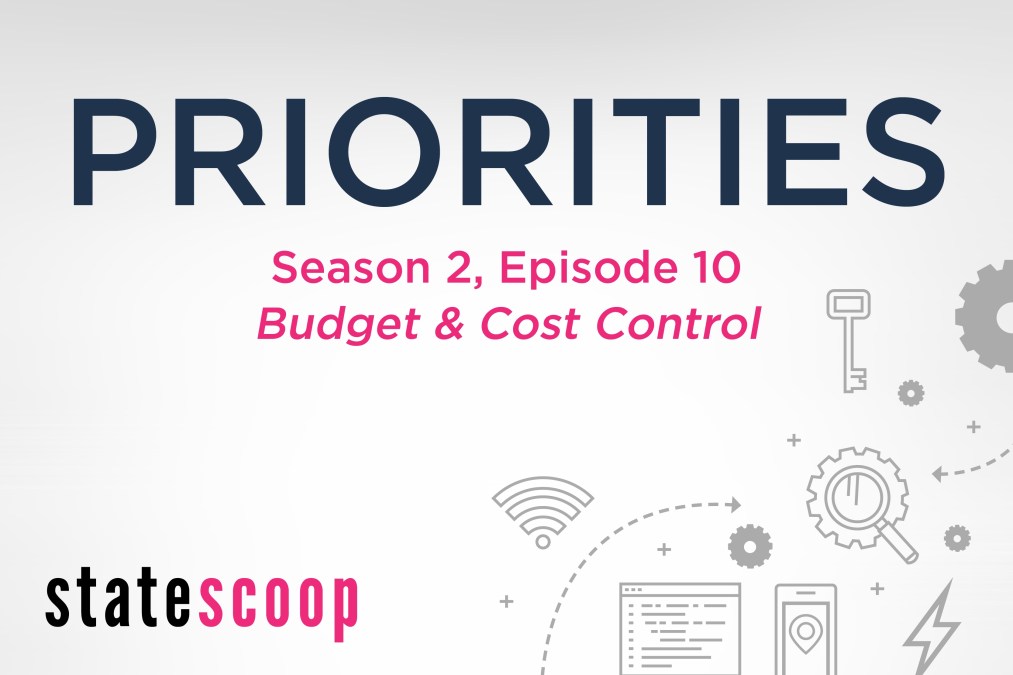
States look for visibility while crafting future-ready technology budgets
With a topic as broad and ubiquitous as technology, its sometimes hard for state government leaders to get a grasp on how money is being spent on it.
Thats what leaders from Alaska, Hawaii and Ohio say on the penultimate episode of the second seasonof StateScoops Priorities podcast.
One of the issues that we encountered when we set out on the modernization path with IT optimization in the state of Ohio was getting a handle on what agencies were spending on information technology, saysJennifer Leymaster, the chief financial officer for Ohios Department of Administrative Services.
The department, or DAS, includes the states Office of Information Technology, which is overseen by state CIO Stu Davis.
The visibility issue is also challenging for Hawaii, state CIO Todd Nacapuy says on Priorities.
Audits showed that we had 3,000 different ways to categorize IT costs, and trying to bring that down into a single uniform way for departments to identify costs was going to be a very long process, Nacapuy says.
To help address the problem, Nacapuy says his team turned to IT roadmapping but with a modern twist.
We had to come up with a different approach, and thats why we went with IT roadmapping, Nacapuy says. When I say IT roadmapping, its very different than just traditional roadmap approach, because all of this is done visually.
The state has an application that allows officials to display technology budgeting visually, and Nacapuy has changed his budgeting processes to align with that strategy.
In Ohio, the state overhauled expense account level codes in the states accounting system to make it possible for agencies to separately identify IT costs from other costs incurred during normal operations.
In order to get a handle on what agencies were spending, so that we could present a picture of what the enterprise was spending on information technology, so that we could begin to understand, track and control that, Leymaster says. [We worked to make] it possible for agencies to separately identify things like heres what Im spending on IT operations. Heres what Im spending on equipment thats related to an ongoing service delivery. Heres what Im spending on development of a new solution or a new application to deliver a program.
On the podcast:
- Bill Vajda, chief information officer, Alaska
- Jennifer Leymaster, chief financial officer, Ohio Department of Administrative Services
- Todd Nacapuy, chief information officer, Hawaii
- Jake Williams, associate publisher and director of strategic initiatives, StateScoop
What to listen for:
- With Alaskas IT consolidation, Bill Vajda expects the state to begin to think differently about how it spends money on technology.
- The biggest change still to occur in government technology spending is the process of re-engineering the way states do business, Nacapuy says. In Hawaii, that means a move toward quick, agile releases of new products instead of big bang releases.
- To make smart technology investment decisions, states need to partner closer with budget and procurement offices, Leymaster says.
- The most efficient way for government to plan for technology budgeting is to avoid surprises with their senior leadership, Vajda says.
- States like Ohio are focusing on migrating IT costs from capital expenditures to operational expenditures, Leymaster says.
Priorities is StateScoops regular podcast that examines the leading strategies, technologies and challenges that state CIOs expect to face this year.
In addition to listening to Priorities on StateScoop.com, you can now subscribe to the podcast on iTunes and have episodes delivered directly to your podcasts app on your smartphone when they are released.

